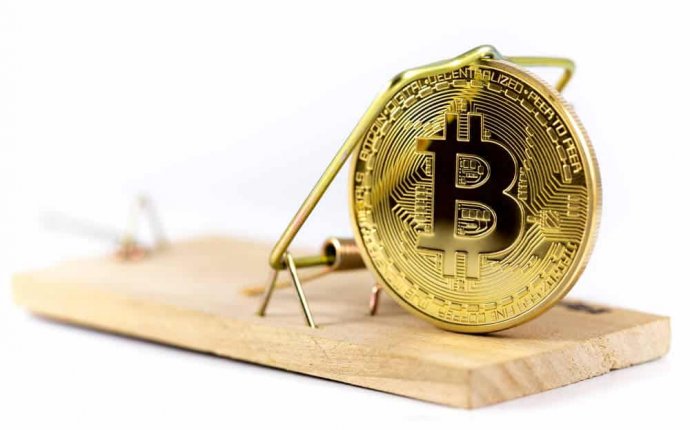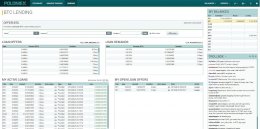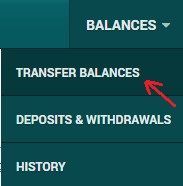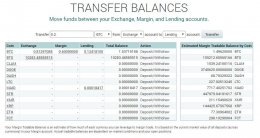
Earn large amounts of Bitcoin
 One of the most reliable tools in my cryptocurrency investing toolbox is lending on the Poloniex exchange. It's the old-faithful, slow-but-steady, go-to champion of my passive investment strategies. And it's an answer to the age old question: if you have a large amount of Bitcoin or some other cryptocurrency lying around, what can you do with it? Make more of it, of course!
One of the most reliable tools in my cryptocurrency investing toolbox is lending on the Poloniex exchange. It's the old-faithful, slow-but-steady, go-to champion of my passive investment strategies. And it's an answer to the age old question: if you have a large amount of Bitcoin or some other cryptocurrency lying around, what can you do with it? Make more of it, of course!
I'll be talking mostly about Poloniex, my favorite exchange for a number of reasons: the UI is robust & easy to use, the charting is gorgeous (even on my phone), and there is a very large selection of different cryptocurrencies to trade. But everyone has their own preferences. Other exchanges support lending as well, and the general principles discussed here apply equally well to each of them, though the nitty gritty of the UI aspects will differ.
There are two types of trades you can do on Poloniex: you can go long (buy low sell high) and you can go short (sell high buy low). In order to short the currency pair ETH/BTC you would perform the following steps:
- Borrow some amount of Ether (ETH), let's say 50 ETH for this example. You are now obligated to pay back 50 ETH, plus some interest, to the lender at some point in the future.
- Sell that ETH for Bitcoin (BTC). Let's imagine you get 5 BTC for all that ETH.
- Price of ETH goes down. Woohoo, this is good news for shorters!
- Buy back the 50 ETH you sold earlier. But now, because of the lower price, it only costs you 4 BTC.
- Return the 50 ETH (plus interest) to the person you borrowed it from.
- The difference between the amount of BTC you got for selling ETH vs. the amount you paid to buy the ETH back is your profit (or loss) on the trade. In this case, you got 5 BTC for selling ETH, then paid 4 BTC to buy it back. So your profit is 1 BTC (ignoring the small amount of interest you also paid for the loan).
 Sounds a bit complicated, but Poloniex handles the mechanics of the borrow / repay process automatically, so shorters don't have to think about it much. All they have to do is press a button to open a short position, and another button to close it & book profits / loss.
Sounds a bit complicated, but Poloniex handles the mechanics of the borrow / repay process automatically, so shorters don't have to think about it much. All they have to do is press a button to open a short position, and another button to close it & book profits / loss.
Whenever someone borrows money to open a short position, it's called trading on margin. Note that it's also possible to go long on margin by borrowing Bitcoin.
Tip #1: The rule of thumb for Poloniex is: people borrowing Bitcoin are going long (expecting prices to rise), people borrowing any other cryptocurrency are going short (expecting prices to fall).
The lenders make their profit on the interest they get when the loans are repaid by the margin traders. And that kind of lending is the subject of this article.
It varies. Individual cryptocurrencies all have different interest rates, and those rates, which you can set yourself, fluctuate constantly according to supply & demand.
The last couple months, BTC lending rates (to give one example) have typically been between 0.02% - 0.04% per day. Yes, that's right: per day. That doesn't seem like much on first glance, but it adds up over time:
| Daily interest rate (%) | APR (%) |
|---|---|
| 0.01 | 3.65 |
| 0.02 | 7.3 |
| 0.03 | 10.95 |
| 0.04 | 14.6 |
| 0.05 | 18.25 |
What you can make in 1 year given various average daily rates.
 During periods of high volatility, interest rates can jump as high as 1% or more per day. You can expect this to happen several times per year as cryptocurrencies go through frequent pump & dump cycles. Typically on an upwards price spike, shorters will arrive in droves (anticipating the subsequent dump) and consume all of the available loans, driving interest rates up. But you have to be quick to take advantage, as rates change fast in these circumstances and won't stay high for very long. Once the inevitable dump occurs, short sellers take profits and then loan demands subside again (an interesting consequence of this behavior is that sudden rises in interest rates for no apparent reason can be an advance indicator that the market thinks a large price movement is imminent).
During periods of high volatility, interest rates can jump as high as 1% or more per day. You can expect this to happen several times per year as cryptocurrencies go through frequent pump & dump cycles. Typically on an upwards price spike, shorters will arrive in droves (anticipating the subsequent dump) and consume all of the available loans, driving interest rates up. But you have to be quick to take advantage, as rates change fast in these circumstances and won't stay high for very long. Once the inevitable dump occurs, short sellers take profits and then loan demands subside again (an interesting consequence of this behavior is that sudden rises in interest rates for no apparent reason can be an advance indicator that the market thinks a large price movement is imminent).
So you can expect low rates most of the time, punctuated by brief periods of high rates that can be exciting for a few days, averaging out to an APR of 7-10%, maybe a bit more if you're lucky.
I am quite content with 10% per year. Unless you're an expert trader (I'm a crappy trader and not afraid to admit it) this is a much safer way to make money than trading, and still way more than you would get from holding your money in a bank. Plus it's less work than analyzing charting patterns and watching trading positions all day long.
Note: I'm not advocating using 100% of your funds for lending, that would be a terrible idea. Lending is just one component of what should be a balanced investment approach (more on this later).
One more note: Poloniex takes a cut of 15% on all your lending profits, in return for offering this excellent service. So don't forget to take that into account when calculating expected profits.
Like any investment strategy, you have to weigh the good against the bad and decide if lending is right for your circumstances. Let's summarize:
Advantages
- Strategy is mostly automated; very little manual work required
- Very low risk under normal circumstances
- Higher APR than keeping your money in a bank
Disadvantages
- Lower returns than more aggressive strategies
- Potential lost opportunities from being unable to trade while your capital is tied up in loans (you can't exit a loan whenever you want; rather you must wait for the borrower to pay it back)
- Risk of exchange being hacked / going out of business
Regarding that second disadvantage, it's only really a problem if you are an active trader. If you're like me, you have a long-term view and aim to make a little extra from lending while letting your core holdings gain value over time.
Besides, you should never commit 100% of your capital to loans anyway. Always leave some in reserve to take advantage of good opportunities as they come along. Of the Bitcoin I keep on Poloniex, 15% is for regular trading, 15% is collateral for margin trading, and the remaining 70% is for lending. If I was a better trader, I might adjust those ratios a bit more toward the trading side.
Okay, you say, sounds like a non-issue, but cryptomancer what do you mean by "risk of exchange being hacked"? Are you serious? Yes. Yes I am. This is a good point to step into









